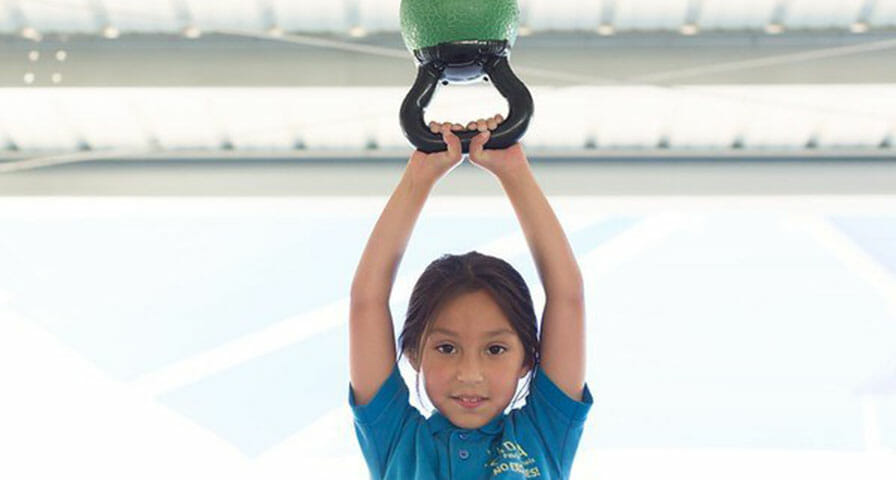Data from student-worn heart rate monitors and research about the positive impact physical education has on academic success convinced an IDEA Public Schools principal to make sure students who need academic support don’t get it at the expense of exercise and fitness.
“‘You will no longer take kids out of PE for academic intervention until they have had at least 30 minutes in P.E. utilizing the monitors,’” mandated IDEA Monterrey Park principal Curtis Lawrence.
IDEA students wear the IHT Zone wrist heart rate monitors during physical education and strive to exercise at an elevated heart rate for as long as they can during class or activity breaks. Students can see in real time if they are improving their fitness by exercising in the target heart rate zone (yellow for moderate to vigorous activity; red for vigorous activity) by the color displayed on the heart rate monitor.
The school network places a premium on academic development throughout its primary and prep campuses: five of its high schools earned top 10 recognition in the 2017 Washington Post rankings of America’s most challenging high schools. As a school district, IDEA strives to see its students:
- Take multiple Advanced Placement Exams;
- Send 100 percent of all high school graduates to college
Coupled with research proving the relationship between physical fitness and academic success, Kirksey uses the heart rate data he collects through the IHT Spirit System software on IDEA’s students to correlate time spent exercising with improved behavior as well as academic success. The data has been so compelling, he said, that principals, academic teachers and other administrators are making sure students don’t miss exercise time.
“We have students who are going through three-hour academic interventions,” Kirksey explained. “We went to the [principals] and asked [that the P.E. teacher get] to work with the kids who are in academic intervention. Let us be the 15-20 minute break when those kids come outside.”
Recess during the intervention is structured, Kirksey said, and students have to meet activity goals. The goals not only help students improve their fitness (they check their heart rate every three minutes to make sure it’s elevated), the students return to the classroom energized and ready to learn.
“We can see that the kids are focusing better when they come back into the classroom,” he said. “It is amazing how this simple tool has bridged an entire district.”
Seeking IHT Spirit System information?


